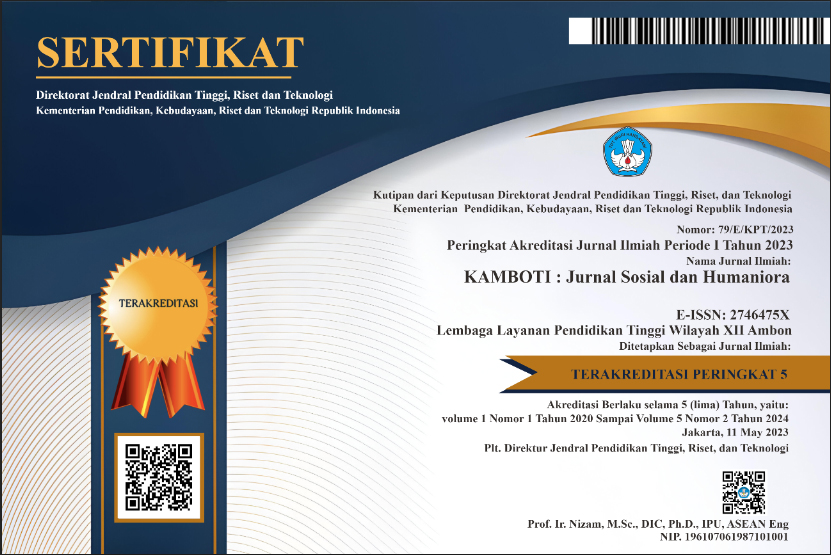Estetika Lagu Banjar Populer: Suatu Representasi Kultural, Pengalaman Eksistensial, dan Nilai Sosial Masyarakat Banjar
DOI:
https://doi.org/10.51135/kambotivol1issue2page106-113Keywords:
aesthetics, philosophy of beauty, Banjar song, beauty, musicAbstract
The philosophical aspects of art (aesthetics) explored in this study refer to the popular Banjar songs (with a sample of 14 song titles). Therefore, the vision of discussing the aesthetics of the popular Banjar song is appropriate to expose, extract, and uplift its ontological, epistemological, and axiological values. This study is a qualitative-descriptive type of research with aesthetic study approach (wetland environmental aesthetics), with the object of popular Banjar songs. From this design, the data analysis method uses two approaches, namely: music analysis and art philosophy analysis (philosophical aesthetics). The results of this study found that the aesthetic concept of the popular Banjar song refers to the following three philosophical aspects. First, the metaphysical value or substance of the popular Banjar song which lies in its two ontological realities, namely musical expressions and song lyrics in the Banjar language as a representation of Banjar culture. Second, the value of knowledge and art truth (aesthetic epistemology) of the popular Banjar song tends to be in the framework of the philosophy of empiricism, namely the knowledge and truth of art that prioritizes the existential experience of the subject. Third, the social value of the popular Banjar song that stands out is the discourse on work ethic, which is based on the value of religiosity, while the prominent political value (social institution) is family education.
Downloads
Published
24-04-2021
Issue
Section
Articles
License
Copyright (c) 2021 KAMBOTI: Jurnal Sosial dan Humaniora

This work is licensed under a Creative Commons Attribution-ShareAlike 4.0 International License.
How to Cite
Hadi, S. (2021). Estetika Lagu Banjar Populer: Suatu Representasi Kultural, Pengalaman Eksistensial, dan Nilai Sosial Masyarakat Banjar. KAMBOTI: Jurnal Sosial Dan Humaniora, 1(2), 106-113. https://doi.org/10.51135/kambotivol1issue2page106-113



